Last year was a great one for movies with big themes and stunning cinematography. No two movies from 2012 encapsulate both of these traits better than Life of Pi and The Master, and both are now out to own on Blu-ray.
With the proliferation of streaming video and instant rentals, the biggest factor for me that decides whether or not I need to own a movie or not is the re-watchability factor. I’ve seen The Master twice already and the second time there were all kinds of mysteries about its characters that were still unfolding on a second viewing. Life of Pi has a similar must-watch-again-and-again attribute, but it isn’t just due to character.
At the very heart of director Ang Lee‘s thrilling adventure is a question. Why do we need to tell ourselves stories? In the scenes that bookend the film and appear throughout, Irrfan Khan relays the amazing tale of the time he spent on a liferaft following a shipwreck that devastated his family and upended his life completely.
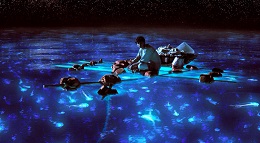 Lee gives us his dynamic visual representation of that story, with the help of some state-of-the-art visual effects that never once get in the way of the storytelling. Lee is singularly focused, and he creates a wondrous world around Suraj Sharma (who plays the young Khan) that is equal parts magical realism and harrowing danger. Lee is at the top of his game from a suspense standpoint, balancing the two expertly throughout.
Lee gives us his dynamic visual representation of that story, with the help of some state-of-the-art visual effects that never once get in the way of the storytelling. Lee is singularly focused, and he creates a wondrous world around Suraj Sharma (who plays the young Khan) that is equal parts magical realism and harrowing danger. Lee is at the top of his game from a suspense standpoint, balancing the two expertly throughout.
It’s worth watching Life of Pi again just to try and process the ending of the film for yourself. Rafe Spall plays a writer who has heard that Pi’s story “will make me believe in God,” but that’s a little too on the nose for me. Certainly there’s a question of faith and a search for meaning at the core of Life of Pi, but the film doesn’t offer any easy answers.
 Part of the movie’s charm is that people of different faiths and cultures will have different interpretations of Life of Pi. Could both realities exist in the same space and time? If it sounds like a sci-fi question, that’s because Life of Pi successfully exists within multiple genres, and is gripping cinema all around.
Part of the movie’s charm is that people of different faiths and cultures will have different interpretations of Life of Pi. Could both realities exist in the same space and time? If it sounds like a sci-fi question, that’s because Life of Pi successfully exists within multiple genres, and is gripping cinema all around.
I didn’t watch the 3D Blu-ray, but I can tell you from my experience in the theater that the 3D was very impressive, as are the extras on this Blu-ray. Oscar-winning visual effects supervisor Bill Westerhofer is on hand for a 20-minute featurette that covers the making of some of the most remarkable VFX scenes in Life of Pi, and there’s a shorter one on the creation of Richard Parker, the life-like CGI tiger. The best extra feature is the hour-long documentary that chronicles the entire four-year process and journey of the film, with extensive interviews from Lee and Sharma especially.
It’s no surprise that Paul Thomas Anderson‘s mysterious character study The Master received three acting nominations for its three main actors Joaquin Phoenix, Philip Seymour Hoffman, and Amy Adams. Each of them delivers a powerhouse performance that, along with Jonny Greenwood‘s jarring score and Mihai Malaimare Jr.‘s gorgeous 65/70mm cinematography, adds up to the most unsettling film of the year.
Watching the film again partially takes care of the expectations that are brought about by the mounting conflict/friendship of Phoenix’s aimless drifter and Hoffman’s enigmatic cult leader. The subtle, not-quite-cathartic third act was tough to swallow the first time around, but knowing where the film is headed allows you to look around the edges and see things that you may not have thought to be important the first time around.
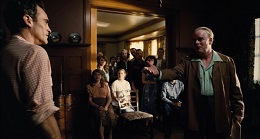 The push and pull of Hoffman and Phoenix — that constant desire to sublimate their natural tendencies and the failure to do so — forms the heart of the film. No other film in recent memory has drawn such fascinating characters that stick with me. Is it difficult to sympathize with them? Sure. But on some level, their search for a higher truth of human existence is something we all can relate to. For an in-depth exploration of the challenging themes and stubbornness of The Master, check out my in-depth exploration.
The push and pull of Hoffman and Phoenix — that constant desire to sublimate their natural tendencies and the failure to do so — forms the heart of the film. No other film in recent memory has drawn such fascinating characters that stick with me. Is it difficult to sympathize with them? Sure. But on some level, their search for a higher truth of human existence is something we all can relate to. For an in-depth exploration of the challenging themes and stubbornness of The Master, check out my in-depth exploration.
Anderson has taken an interesting approach to the twenty minutes of deleted scenes included on The Master DVD/Blu-ray Combo Pack. He puts it all together as a stand-alone feature and titles it Back Beyond, giving it the feel of its own short film. It rounds out the character portrait with some more interesting material that didn’t quite fit into the narrative. It’s kind of like the b-side of a single, I suppose.
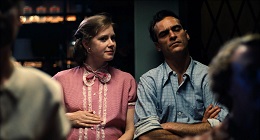 Eight minutes of b-roll from the set is also included, as well as an hour-long documentary from 1946 called Let There Be Light, directed by John Huston that covers WWII veterans and their struggle to re-integrate into U.S. society after coming home from the war. It’s something that Anderson used for research for The Master, and it’s a fine film, but it’s a little disappointing that there’s no more direct material related to the movie itself.
Eight minutes of b-roll from the set is also included, as well as an hour-long documentary from 1946 called Let There Be Light, directed by John Huston that covers WWII veterans and their struggle to re-integrate into U.S. society after coming home from the war. It’s something that Anderson used for research for The Master, and it’s a fine film, but it’s a little disappointing that there’s no more direct material related to the movie itself.
Then again, The Master is full of strange and wonderful mysteries, so maybe we’re better off knowing less.




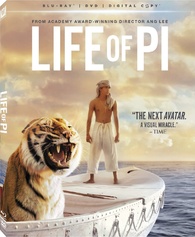
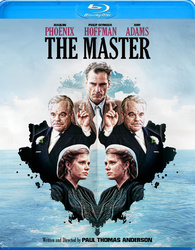




Comments on this entry are closed.